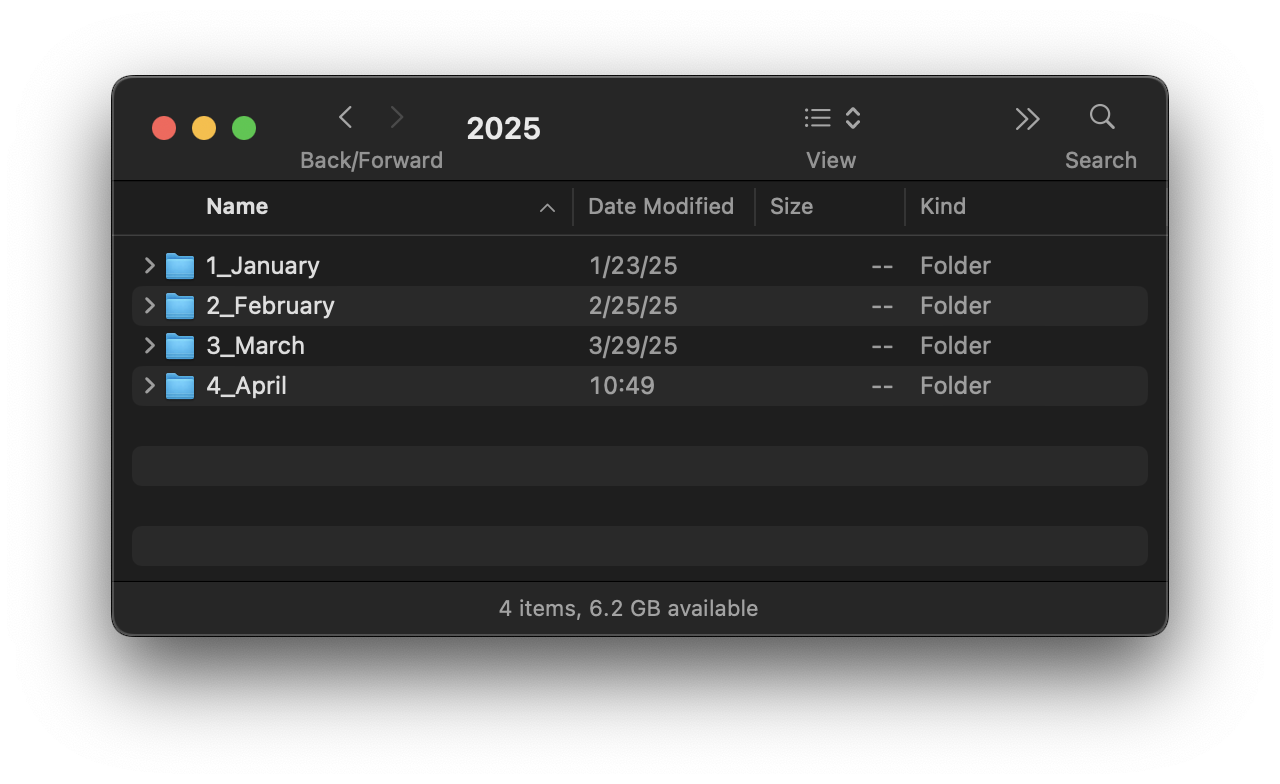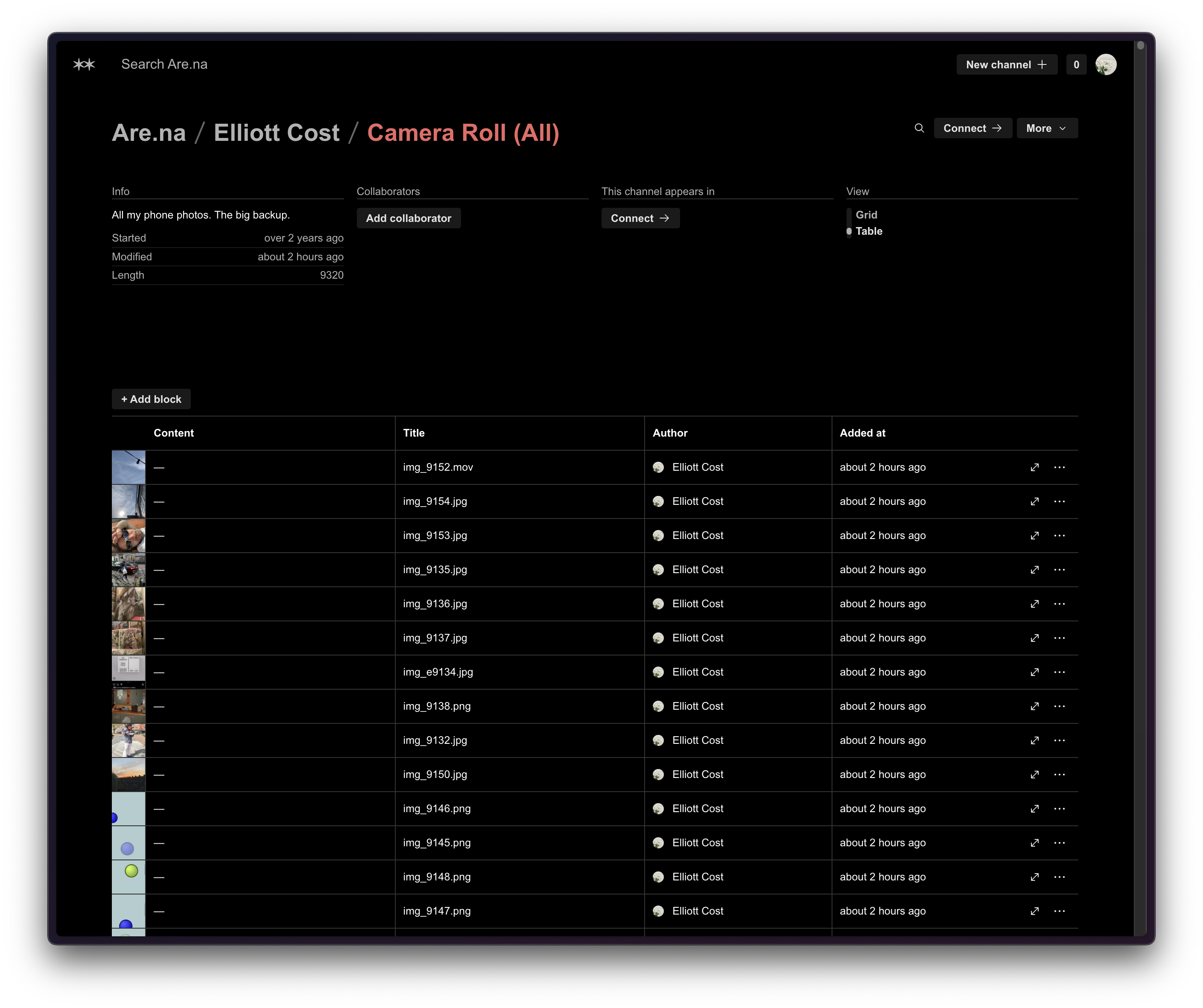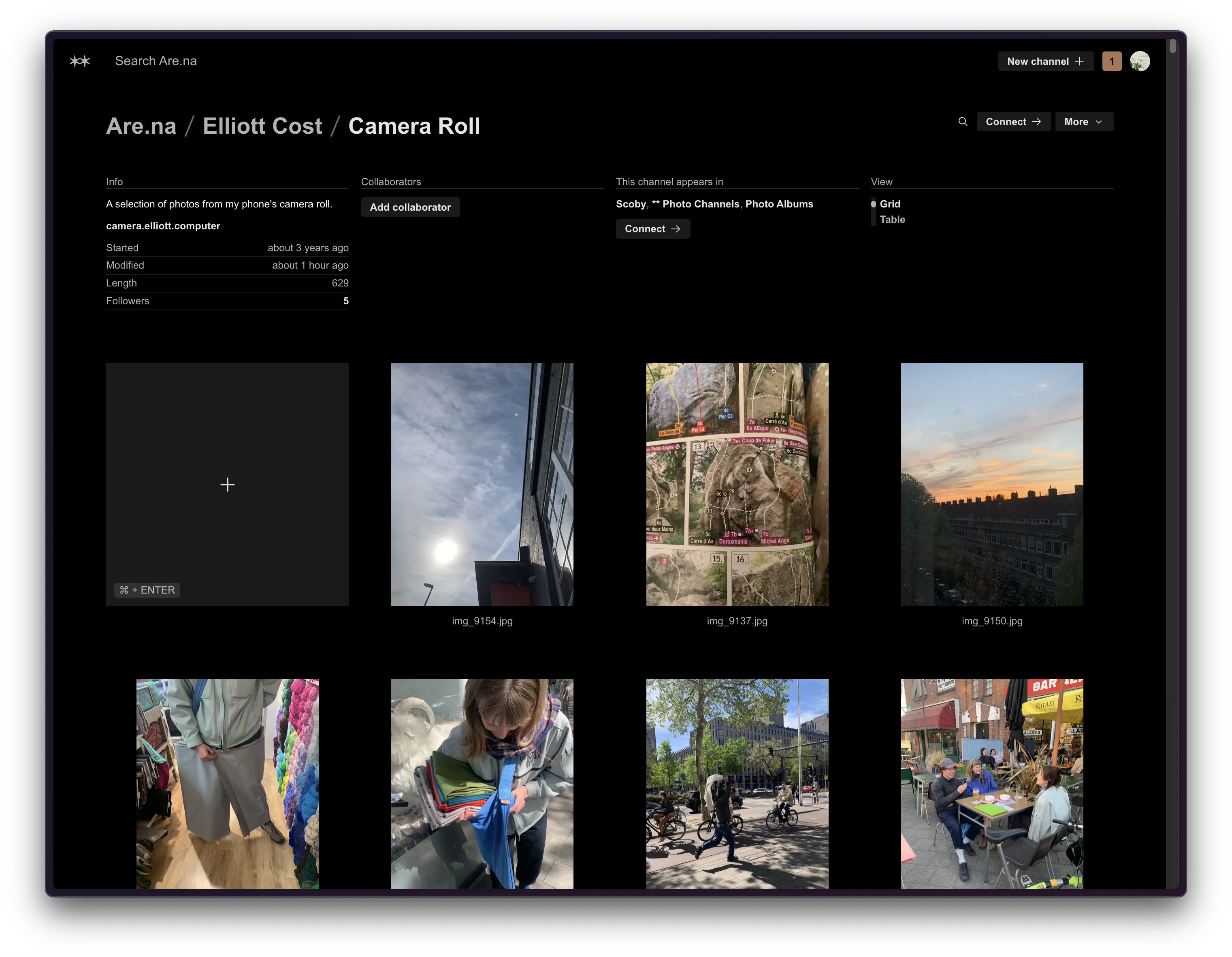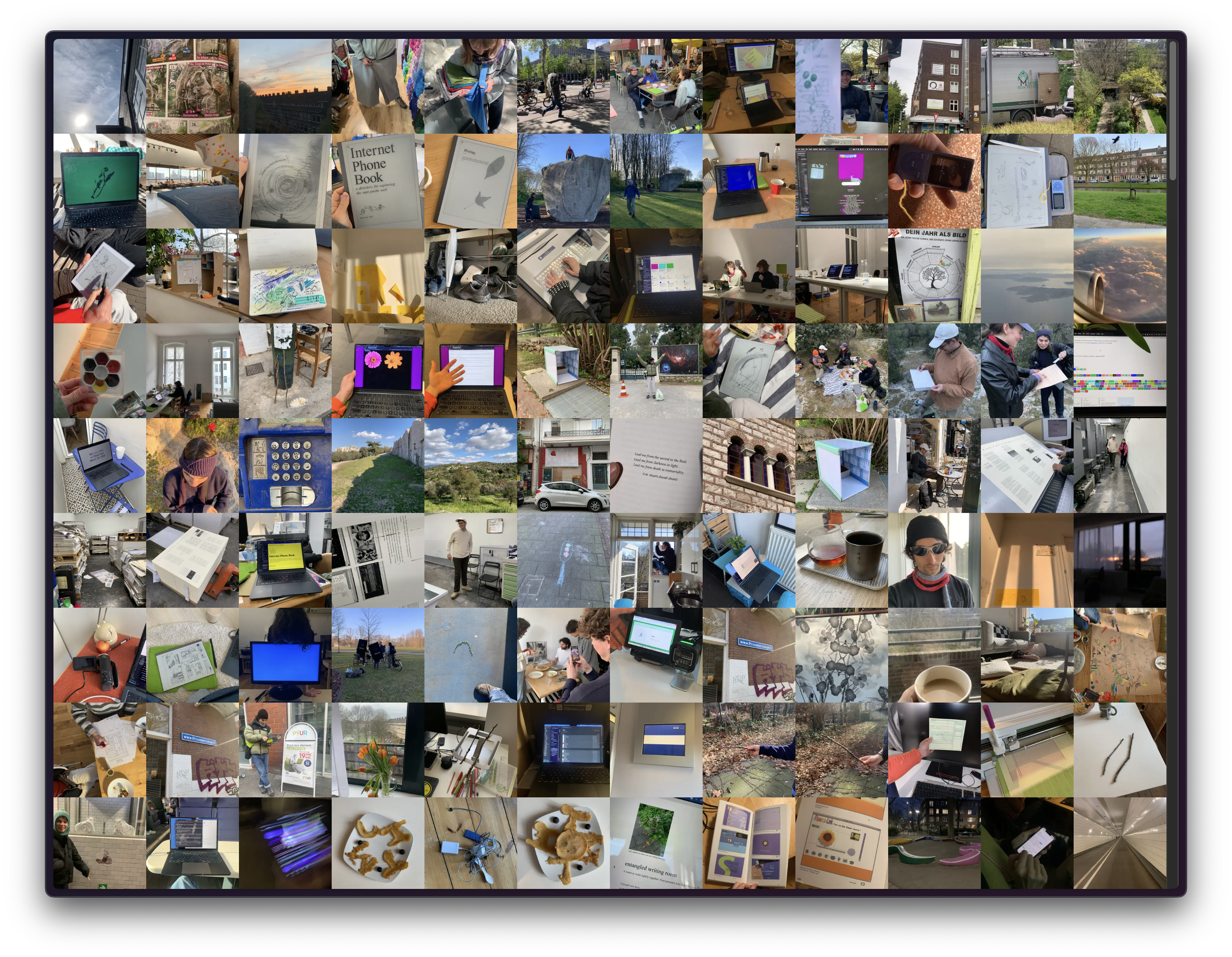On my camera roll
Over the last year I've been trying to be a little more intentional with my digital life. One form of this is this very site and another is how I've been backing up and publishing my phone photos.
Every month (or when my phone runs out of space), this is usually around 500 photos, I plug my phone into my computer and download all my photos to a folder with Image Capture. I organize it by year and month. I don't do any curation. I like to keep all my photos.
I find it a bit funny that we take so many photos on our phones, but very few of them are published. Inspired by my phone's camera roll, I wanted to make a website version of this screen. The routine I’ve outlined below lets me update my website camera roll, back up my photos, and clear space from my phone. This usually takes around half an hour to complete.

Are.na as photos archive
I've been using Are.na since 2015. It's a beautiful community and way to research and bookmark, but also it's a place to store all types of files. Per Are.na's help docs, "Image uploads are limited to 50MB and video files are limited to 250MB." This is ideal for phone images, and I rarely take videos over this limit.
Private catch-all channel
I use a private channel to store every photo and video I've taken on my phone. I try my best to keep it in chronological order, but sometimes the upload process glitches a bit and things get messy. Oh well, this is just a big backup.

Curating into a public channel
Using my private channel as material, I'll publish some of my favorite images to a public channel. Are.na's connect function is useful for this.

Camera roll as website
Using Are.na's API, I built a website version of my camera roll that pulls from my public channel. Sort of like reconstructing my camera roll on my phone but as a public website. You can browse it at camera.elliott.computer.
I made my camera roll website into a template if you'd like to use it or modify it.

Caveats
■ Are.na uses AWS so all your files are stored with Amazon. This is also the case with most web-based software today, so maybe not a downside but worth being aware of.
■ EXIF data including location info is stored in every image. It could be easy to strip this data before uploading, but I'm lazy.
■ Even though the photos are in a private channel, they are still somewhat public, at least the actual image URLs.